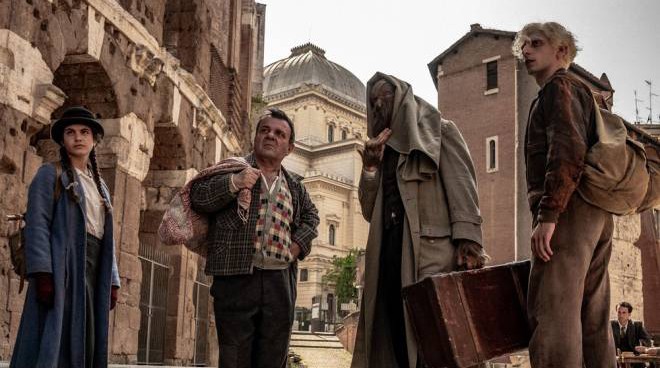LA RAGAZZA HA VOLATO
The quasi-documentaristic and purposefully beat-down minimalism of La ragazza ha volato is palpable in every frame of the film. Whether it is an aspiration that is successfully achieved, that is up to debate.
 |
Wilma Labate’s La ragazza ha volato has been inserted into the Orrizonti lineup with the premise that its setting, the north-eastern town of Trieste, is a meeting point of various cultures, of the east and the west. The film, however, does not convey at all this multicultural dimension of Trieste, if not perhaps in the opening scene, a beautiful nocturne that portrays glimpses of a sleepy yet lively town. This introduction and premise is in fact misleading: Labate’s film aims to describe social apathy as the lead teenager has to cope with the consequences of a sexual abuse. The setting could have been in any major italian town and nothing would have changed. In fact, this film is only the last in a long series of italian films that are set in the North-East and do not seem to fully attempt to represent accurately its regional peculiarities, a feature that would have enrichened it and truly rendered a new “horizon”. Instead, the characters speak an overly perfect italian (while a Rome or Naples set production would have naturally presented the respective accents); the location value of Trieste - an italian coastal town that features austro-hungarian architecture – seems not to be valorised enough; the multiculturalism suggested in the premise of a town with a strong slovenian minority is not at all even mentioned. The magic of night time Trieste, the town of authors such as Joyce (who spent ten years of his life there) or Svevo entirely dissipates from the second scene.
The story of Nadia, a teenager neglected by everyone that finds herself in a social paralisis that has however almost nothing in common with Joyce’s characters from “Dubliners” or Svevo’s psychological introspections. The narrative uses ellipsis in multiple scenes but not that of the abuse, depicted in crude explicity with the purposes of provoking shock and indignation, and the result is a storytelling that shows too much in certain cases and is excessively restrained in others. The time jumps that occur leave too many unanswered questions, the scenes that follow more than often do not satisfy.
The most startling feature of the film has to be the screenplay, penned by the D’Innocenzo brothers (who have rightfully won – with Favolacce - the award for best screenplay at Berlinale in 2020). Far from the usual quality of their work, the dialogues are of a banality that is unmatched and their neutral, almost amateurish delivery only worsens any conversation. The best scenes of the film are, as a consequence, all silent, and inevitably ruined as soon as someone utters a word.
There are moments in which the main actress Alma Noce shines in her performance, and some form of emotion emanates from the screen. The scenes at the hospital, as well as several sequences where Nadia is alone and silent seem to suggest that there could have been a better version of this film, a version that could have been a significant narrative about contemporary topics such as alienation or violence on women, a portrait of yet another unacceptable yet very present condition of feminity. Despite such a noble endeavour, the final work related from its promise, and the weaknesses drag down with them the stronger elements.


Comments
Post a Comment